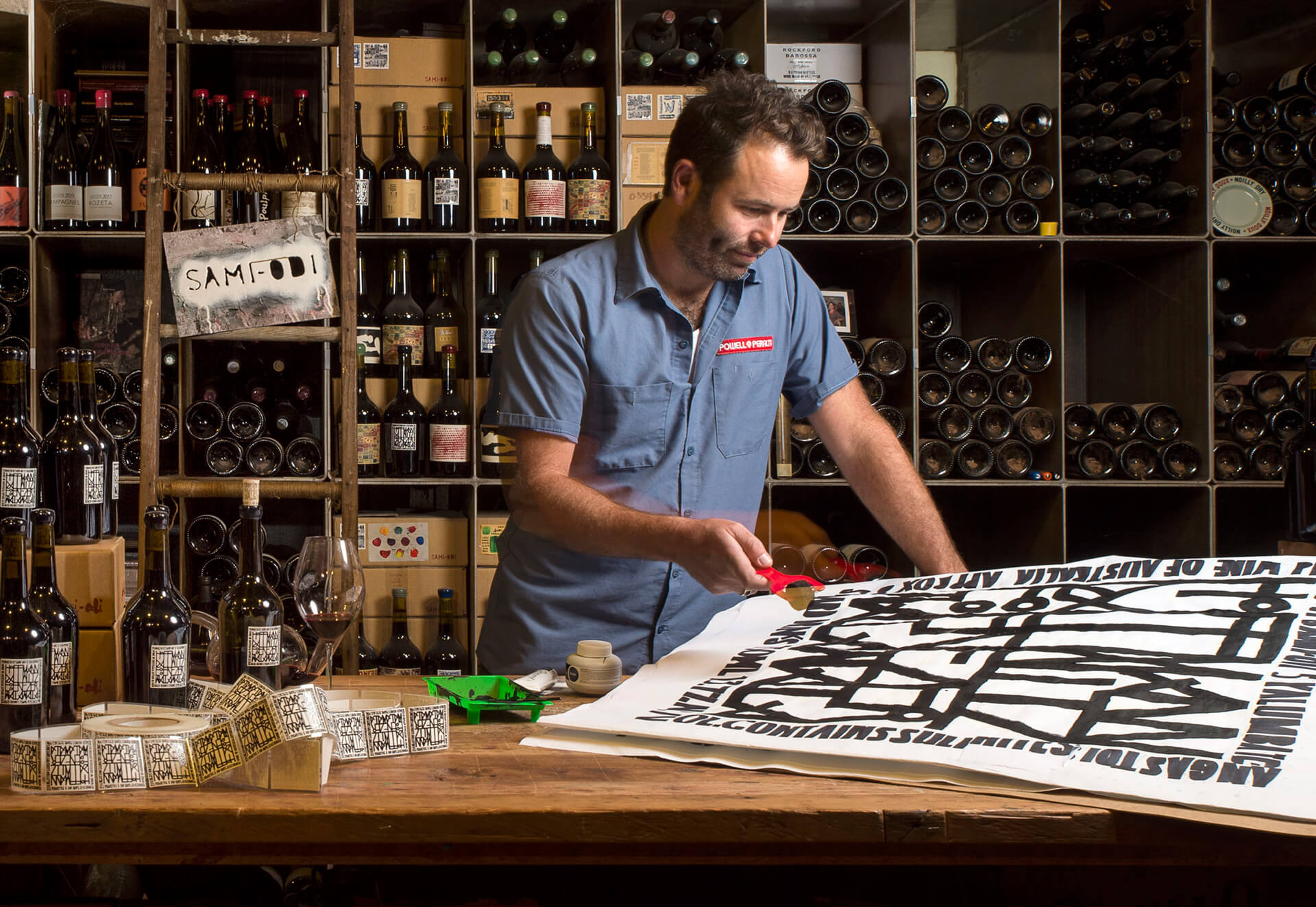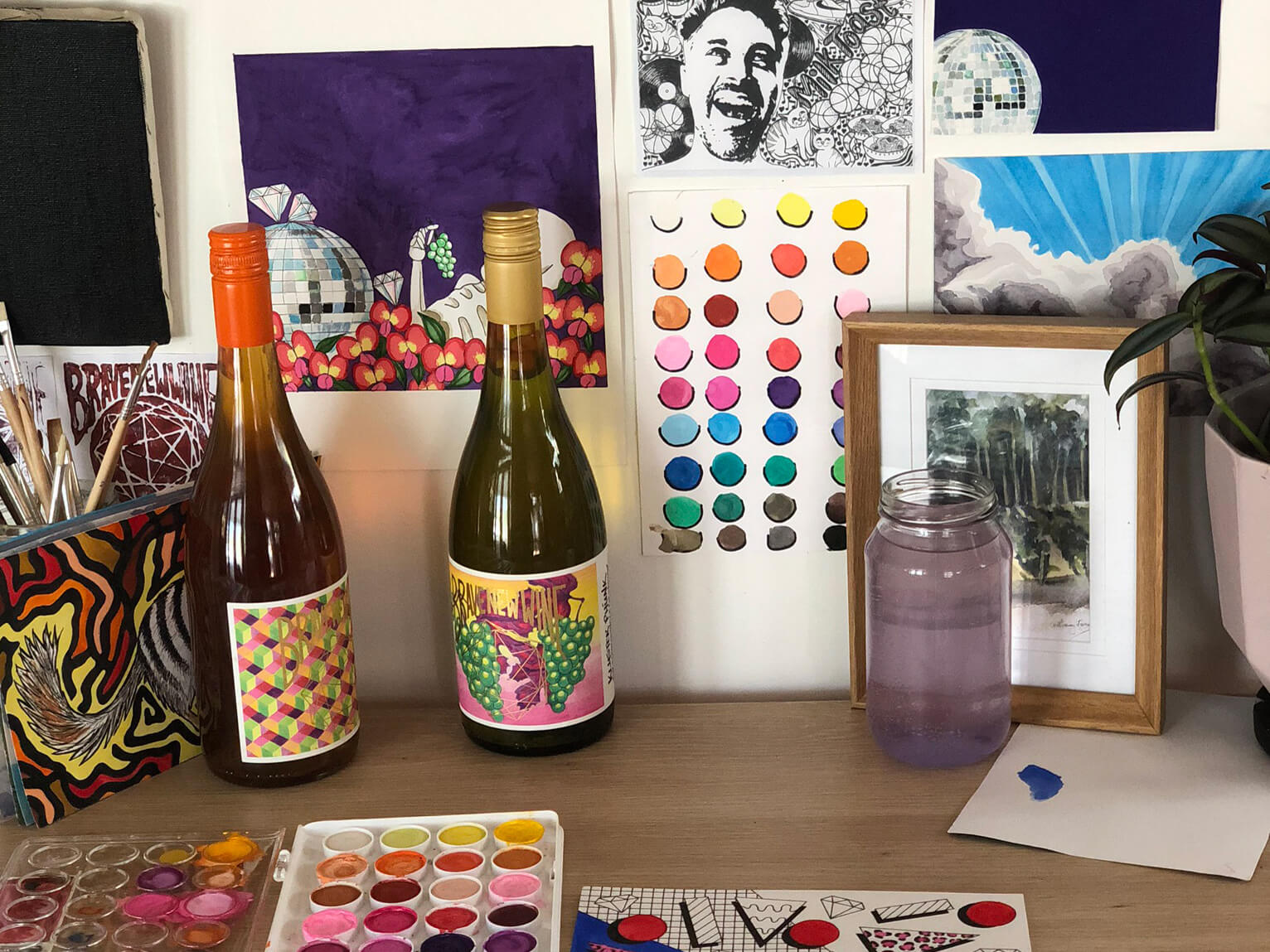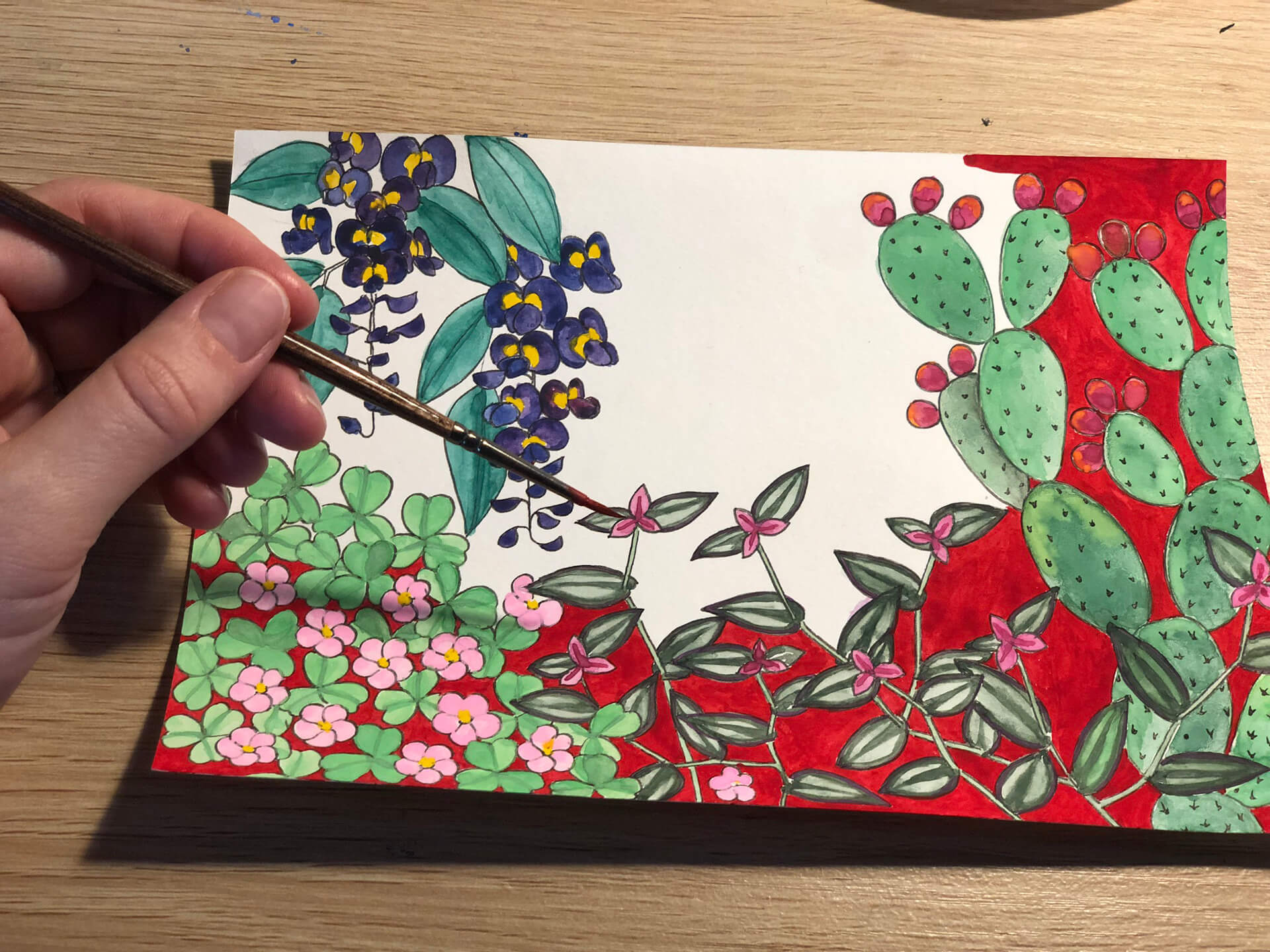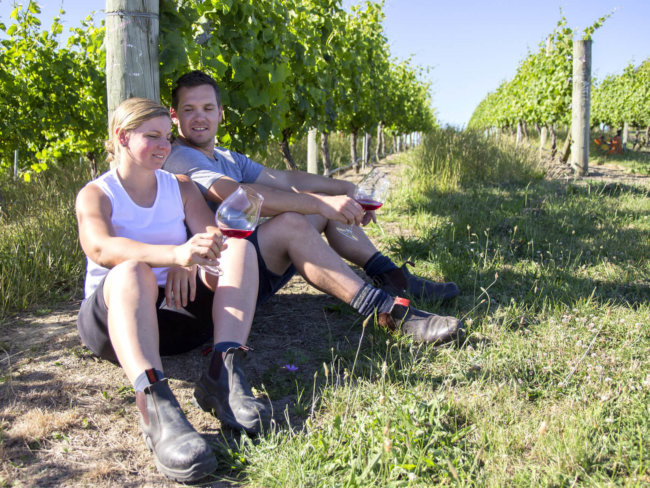Wine labels usually don’t factor in wine competitions, where blind-tasting rules mean that wines are judged in a vacuum. YGOW is unique because it is not a blind tasting. The quality of the wines, of course, has primacy for the judges, but other factors are allowed into play, including creativity, leadership, the whole wine package.
Something that stands out about many of the minimal intervention wines around today are their labels. There’s a brightness, a DIY aesthetic, that runs right through from vineyard to wine to bottled end-product. It is certainly true of the labels by Young Gun of Wine Awards luminaries Sami-Odi and Brave New Wine.
Everything from old family photos to paint blotches, vintage matchboxes and modern hieroglyphics make an appearance on Sami-Odi labels. Winemaker Fraser McKinley – the YGOW in 2014 – creates the labels himself, a new one for each year’s releases. He affixes them by hand onto bottles hand-sealed with wax. Each finished bottle is a work of art – as much as it is a cultish wine product. (Ironically, most of the wines are sold by pre-order, well before the label designs see the light of day.)
“I work on the designs in the winter, a year after the winemaking,” McKinley says. “It is a favourite part of the year for me. It is such a different task to the rest of the year, when I’m working on agriculture, in the cellar, or on admin and paperwork.”
McKinley started making labels to fulfil his own interest in painting. He has a degree in design, and you get the sense he’d be an artist given another life. The annual reinvention of Sami-Odi livery satisfies this artistic side, and connects strongly with the wines.
“In the vineyard, we use organic principles,” says McKinley. “There are no pumps or electricity in the cellar. It is a lo-fi or simple approach to winemaking. When it comes to doing labels, I use kid’s paint rollers, not Photoshop. The method is not highbrow, it’s kindergarten stuff. The approach to winemaking is simple, and likewise for the labels.”
If there is one common thread between the labels, it’s geography. McKinley sources shiraz grapes from small plots within the Hoffmann family’s Dallwitz vineyard in the Barossa Valley, famous for its old, characterful vines. He labels each new release – there are only two per year – with the name of the grower and block. “This communicates the geography of the wines,” he says. “Otherwise the labels represent parts of our life that I find interesting.”
Take the 2012 ‘Baby Tui’, a blend of shiraz grapes sourced from three different plots within the Dallwitz vineyard, with vines of different ages. The label features a collage of matchboxes collected by McKinley’s grandmother during the 1920s.
“I spent a few weeks putting them together in an assembly that I liked, as an A1 artwork. The matchboxes represent a time before modern typesetting, when typesetting would have been done by hand. I look back fondly at that label. It was my daughter’s birth year. The wine is named after her. I’m particularly close to that wine,” he says.
Yoko Lüscher-Mostert’s hand-painted labels for Brave New Wine are glorious and energetic. They are packed with nostalgia and (what she lovingly calls) “blingy aesthetics”.
“I paint and design our labels because I see it as an extension of what BNW is, a collaboration between Andries and I. Long have people lauded that wine is the intersection where art meets science – we’re just being a bit more literal about it by sticking it right on the bottle as well as into the bottle.”
![]()
Brave New Wine’s label workspace. Photo supplied by Yoko Lüscher-Mostert.
Lüscher-Mostert and her husband, Andries Mostert, make minimal intervention wines from “tiny volumes of high-quality fruit” sourced from around the Great Southern region. They were YGOW finalists in 2016, 2017 and 2018, and won 2017’s Danger Zone award for the most adventurous wine with their 2016 ‘Dreamland Botanical Riesling’– grapes wild fermented in older barrels, each with a bouquet garni of locally sourced native botanicals.
“Each wine gets a new label each year, so I hope to represent the wine of that year with that label. Some of our wines are made every year, for example, the ‘Sunshine & Hercules Riesling’, but even with pretty similar winemaking by Andries, the wines still differ from year to year. We aren’t aiming to replicate the same wine over and over, rather, doing what’s best for the vintage. So, I feel the wine deserves its own label to celebrate its uniqueness.”
The ‘Dreamland’ label has a recurring rainbow theme from year to year. The 2019 incarnation is full of rainbow rays, gum leaves and gumnuts superimposed by the BNW logo: a golden, three-dimensional pentagram nicknamed “the star shape”. It’s unmistakably Lüscher-Mostert. The back-label text for all their wines is personalised by Mostert, who handwrites the script.
![]()
A Brave New Wine label being painted by Yoko Lüscher-Mostert. Photo supplied by Lüscher-Mostert.
Inspiration starts with the wines, and veers off from there. “I’m influenced by May Gibbs, Ken Done, Davida Allen, 90s music zines, Peter Carey books, the 80s, the 90s, My Little Pony, Molly from A Country Practice, all the strong women around me – especially my mum who has always valued all kinds of creativity above all – flora and fauna of the south-west of WA, and of course my muse Andries,” she says. It’s a lot, but each one of the references is somehow instinctively visible in the labels.
The way a bottle of wine looks is meaningful. You know the saying: don’t judge a book by its cover. We invariably do it anyway. We reach out for shiny things, the things that attract us, those things that somehow represent how we want to be perceived. “Yes, people, me included, are influenced by how wines are packaged and presented,” says McKinley. “In retail, you might be looking at a wall of wine, and in that situation it’s almost impossible not to be influenced by what the wines look like.”
Lüscher-Mostert agrees. “The wine label can be the first point of contact for many people, and if it doesn’t immediately appeal and scream ‘PICK ME UP!’ then it’s a lost opportunity. There are so many great wines with awesome labels out there and it is competitive. However, if the wine is shit, they’ll never go back to buy a second bottle, no matter how ‘cool’ the label or producer is. A nice label is great and important, but not the deciding factor for that second glass/bottle.”
At their most luminous, wine labels are a message passed from winemaker to drinker saying: this is what we’re about. For Sami-Odi and Brave New Wine, the labels (and the messages they convey) are incredibly personal. They are extensions of the winemaking process; reflections on the wines; reflections on themselves as winemakers, as individuals, and as partners, as fathers, mothers, daughters and sons.
They are little 3-by-5 works of art that serve as a teaser for a seriously good drink.
Registrations for the 2021 Awards, the 15th annual edition, are now open – until December 18 (2020).
For the first time in our 15-year history, we will now be providing feedback to winemakers on their entries from the panel tasting. As well, we are creating a new trophy to recognise the best vigneron winemaker – that is, for a winemaker who is also managing the vines.
YGOW is open to young wine labels, as well as winemakers on the rise employed in established wineries.
Bringing together our audience of committed wine lovers, and complemented by our Wineslinger Awards for hospitality, Young Gun of Wine is the shortcut to all the cutting edge in wine.
We’re inviting all eligible winemakers to come get amongst it.








